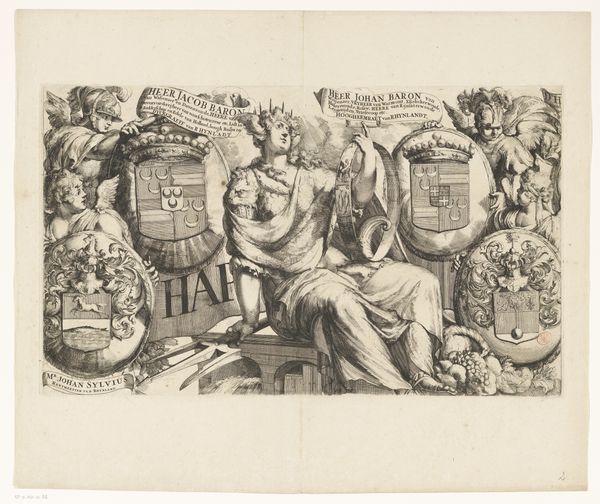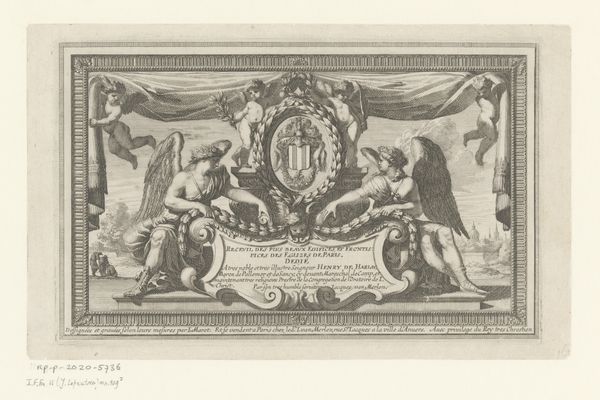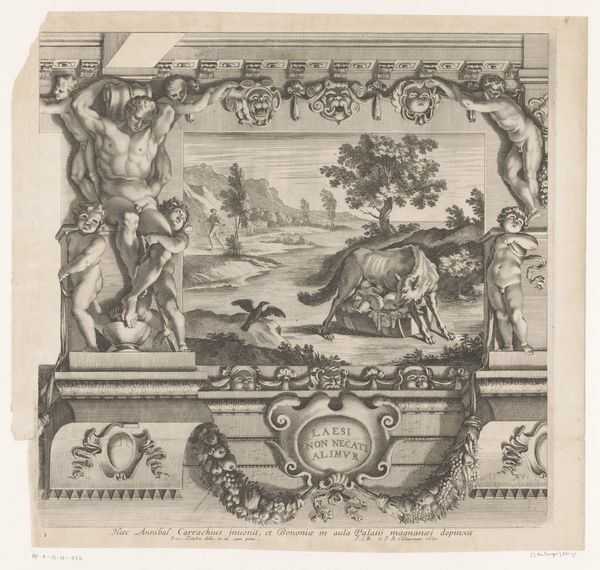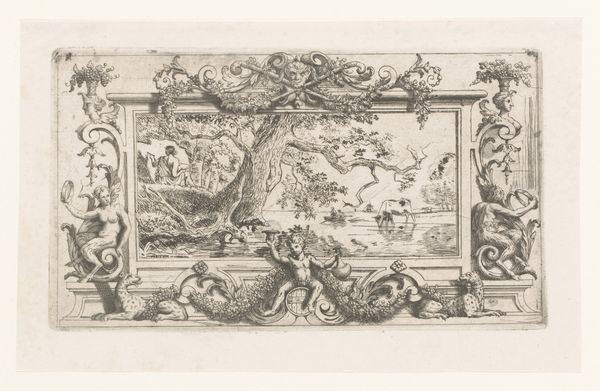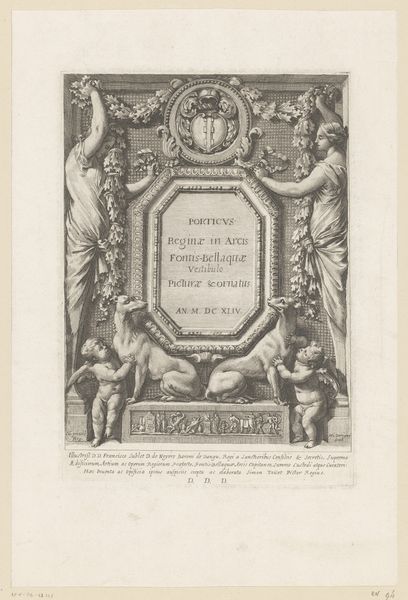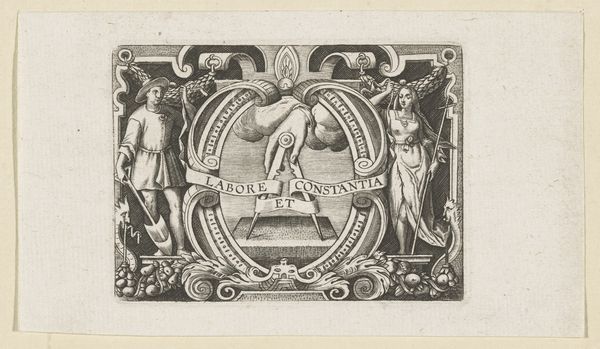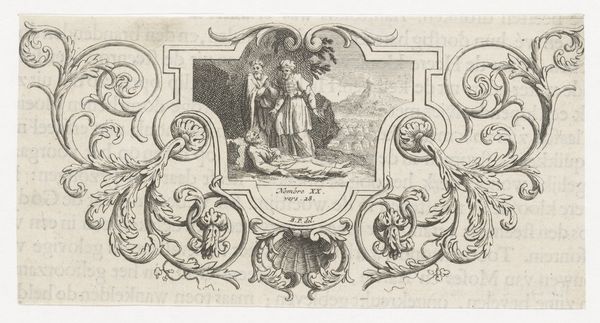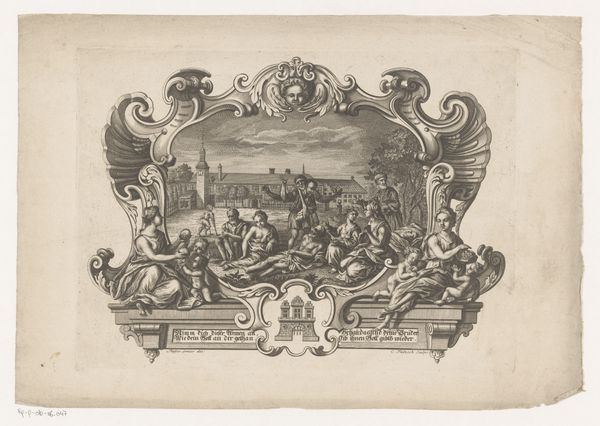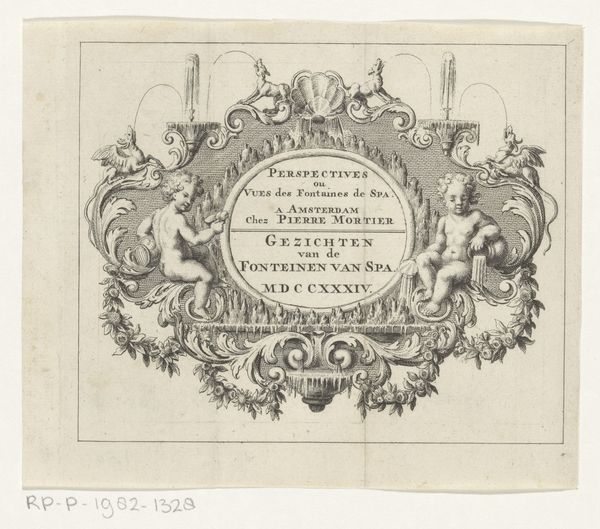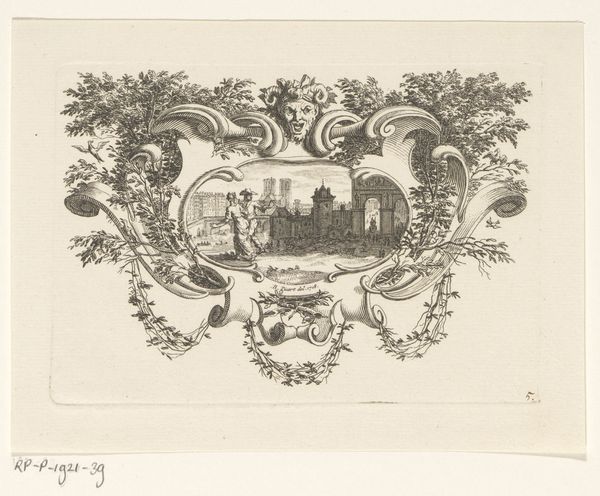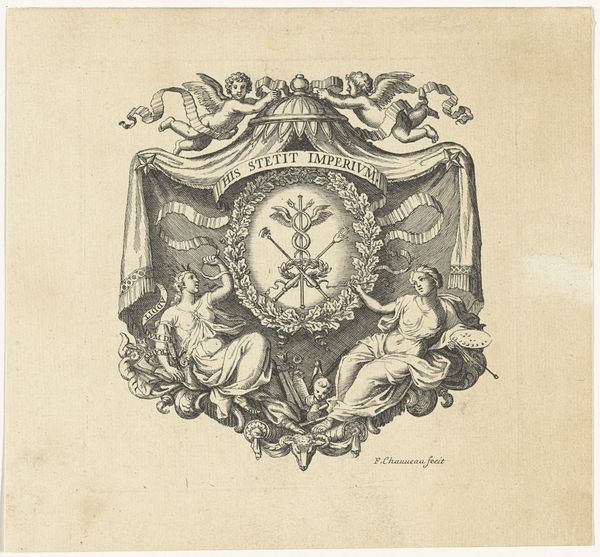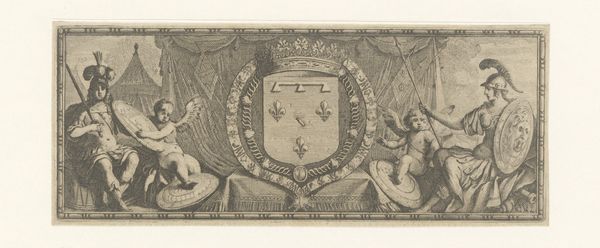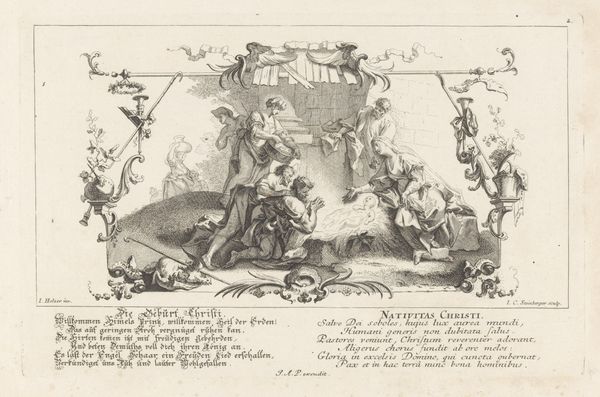
drawing, print, ink, engraving
drawing
allegory
baroque
dutch-golden-age
ink
engraving
Dimensions: height 344 mm, width 570 mm
Copyright: Rijks Museum: Open Domain
Curator: This striking print before us, residing here at the Rijksmuseum, is "Kaart van het Hoogheemraadschap van Rijnland (derde deel)," or "Map of the Rijnland District Water Board, Third Part," created in 1687 by Romeyn de Hooghe. It’s an engraving, utilizing ink, that really pops with its intricate detail. What's your first take? Editor: I'm immediately struck by the feeling of celebratory excess. It’s visually dense, opulent even, but with these delicate cherubs—almost saccharine—carrying shields bearing heraldic imagery. It feels… powerful but strangely cloying. Curator: That opulence absolutely speaks to the Baroque aesthetic, and in many ways encapsulates the Dutch Golden Age, don’t you think? Consider, the Water Board was essentially the regional government responsible for water management. These shields are likely those of board members. Editor: Right. So it’s a symbolic depiction of power, prestige, and land control in the Rijnland district. You have these cherubs presenting the ruling elite, imbuing the very concept of water management with a divine air, almost justifying control. Who gets water, who controls it... that’s a power relationship, isn't it? And these allegorical flourishes definitely obfuscate that. Curator: Indeed. I see it as De Hooghe, the artist, communicating not just geographical data, but also the influence of individuals through symbolic visualization. Look closely and note all the lettering. What do you read there? Editor: It reads as honoring, venerating these water board members. But beyond this pomp and circumstance, are we missing the historical consequences of who got represented—or rather, who *didn’t*? Who’s benefitting from that Rijnland water? The common farmer or these barons? Curator: It’s a map commissioned, it feels celebratory and celebratory. The use of heraldry with allegorical imagery speaks volumes about the self-regard. A gorgeous reflection of power! Editor: Perhaps we’ve unearthed something significant by questioning assumptions about the power dynamics embedded here? Food for thought when interpreting art.
Comments
No comments
Be the first to comment and join the conversation on the ultimate creative platform.
